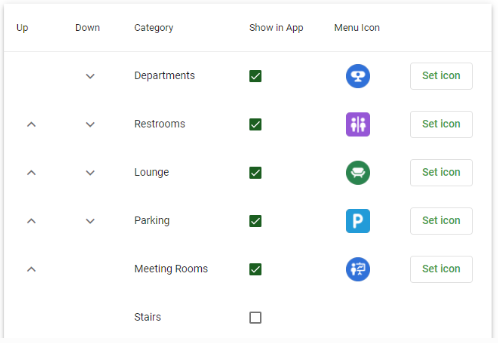De Nieuwe Bibliotheek Almere: Guide your visitors with Indoor Maps and improve customer experience
Did you know that a lost customer in your building can lead to lower conversions? With indoor mapping and navigation, you make sure this no longer happens. In addition, by offering indoor navigation, you create a better experience which contributes to a positive customer journey. We look back at a project we carried out for De Nieuwe Bibliotheek in Almere. Here, Localyse deployed indoor mapping and navigation to support visitors to the library during their visit.

Indoor Mapping
The Indoor Map is an extension to the regular maps for the outdoor environment that almost all mobile phone users are familiar with and intuitively use. Equipped with the Google Maps base map, the highly recognisable and most widely used navigation map worldwide.
Whereas outdoor maps often stop at the front door, this is not the case with the Indoor Map. With indoor mapping, the building inside is also mapped in detail so that visitors can easily determine their location with the map in hand.
In addition, indoor navigation distinguishes itself by not using GPS (the blue dot on the map), due to poor signal reception in buildings. The indoor map now offers the possibility to navigate to and within De Nieuwe Bibliotheek from anywhere in Almere (and beyond).
De Nieuwe Bibliotheek
In the case of the library, all areas accessible to visitors were mapped. A link was also provided to bookcases and rooms. This allows users to search the catalogue via computer or their smartphone for a book, for example, and then enter the location where the book is located (the bookcase) as a destination in the indoor navigation app.


Success indicators for Indoor Mapping
A number of factors are important for a successful implementation of Indoor Maps. We summarise the most important ones:
- Target audience: For De Nieuwe Bibliotheek, accessibility was an important target group: The system had to be usable by people with various disabilities, such as visual or physical impairments. It proved difficult for some target groups, while it proved extremely suitable for autistic people. They could prepare themselves well and find a book without stress.
- User interface: An intuitive and easy-to-navigate user interface helps users find their way around effectively. Clear instructions and layout are important. This point is closely related to the previous point.
- Reliability: The system must function consistently and without interruptions. Reliable performance in different environments and conditions is essential.
- Accuracy: The precision with which the system can determine a user's location within a building is crucial. The more accurate, the better the user experience.
- Integration with mobile devices: Many indoor navigation systems work via smartphone apps or via a web interface. This is also the case with Localyse's applied solution.
- Scalability: The system must be flexible to work in different types and sizes of buildings, from small shops to large complexes such as libraries or hospitals.
- Update frequency: The ability to update the map or receive information about changes in the area or crowds, for example, can improve the effectiveness of the system.
- Costs: The investment of installing and maintaining the system should be proportional to the benefits offered, both for implementers and end users.
The advantages of Localyse Indoor Maps
Localyse’s Indoor Map can easily be integrated within your own app or website. In addition, the Indoor Map can possibly be supplemented with indoor positioning (the blue dot), although this is often not even necessary for a good experience. The Indoor Map comes with a Google Maps base map so that visitors can immediately benefit from the optimal user experience. Moreover, you can easily make changes within the map yourself using the content management system (CMS) provided.


Let's discuss your project
Looking for a way to make better decisions about your business’s location-based strategies? Look no further than Localyse!
Phone





